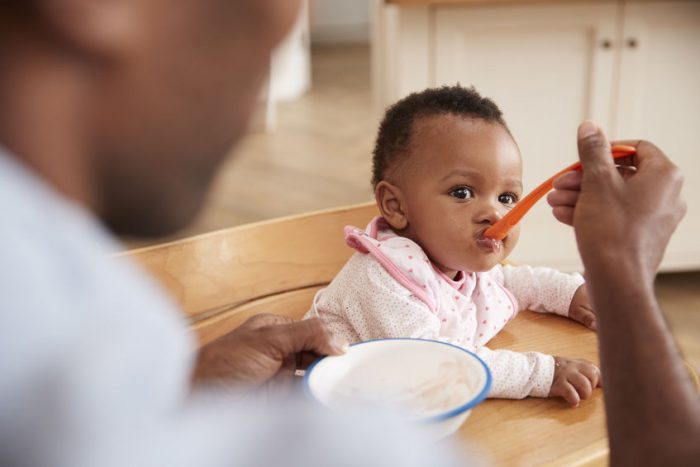
Offering your baby solid foods is a huge milestone. Parents often wonder how to introduce a four-to a seven-month-old child to solid foods. Should parents go for veggies, fruits, and cereal, or a combination of items? Here are four of the top ways you can make the transition from the bottle or breast to solids a success!
Choose a quiet environment
Parents says children can develop a dislike for certain foods from a noisy or upsetting dinner table. While the family should always eat together, it is also necessary to keep the environment happy and calm during a baby’s transition to purees and soft foods. Another tip is to let babies explore the food with their fingers and toes.
Slowly add variety and texture
Variety is the key to getting children to be more accepting of foods as they age. The sooner the better, say most parenting counselors. Experts suggest giving a little one a wide range of options to sample over the first two years of life. Baby cereal is an excellent choice to start with because it is often fortified with nutrients.
After your baby tolerates this food, then adding vegetables and fruits to the cereal is a good idea. You can begin to add these foods separately as well. Just remember to wait a few days before adding another new food to watch out for any items your child is allergic to or does not tolerate.
Read Next | Self Care Tips For New Mommies
Entice children with finger foods
Many babies enjoy playing with bite-sized pieces of food. Tiny morsels are fun to pick up. Picking up these pieces helps little ones learn how to put their fingers up to their mouth. Often this step is crucial to teaching babies how to feed themselves with a spoon when they are older. Things like pieces of cereal, bananas with the peel to hold, and book graham crackers can help your child better learn to bring food to their mouths all on their own.Of course, this should be done with supervision to avoid choking incidents.
Read Next | Baby Milestones: This Is What to Expect in the First Year of Life
Let your baby choose the pace
As your child begins to try different textures, you can offer stage two baby cereals with more grains,and go to meats. Breastfeeding babies often do better on proteins first, according to pediatricians. Children with special needs like those with autism will likely need more time between trying new items. They are sensitive to change and need extra time to adjust, so patience is a huge part of moving to solid food.
Other tips to improve baby’s transition to food include offering fruits and vegetables at every meal, switching up meals, trying new things often, using many textures, scheduling meal times, eating as a family, and getting rid of the boxes and bags. Using a cookie jar for treats instead of leaving them in the box can make it so children are more enticed (read: not as picky) at snack time.
Read Next | Toddlers and Technology: Smart Tips for Parents
Meghan Belnap is a freelance writer who enjoys spending time with her family. She loves being in the outdoors and exploring new opportunities whenever they arise. Meghan finds happiness in researching new topics that help to expand her horizons. You can often find her buried in a good book or out looking for an adventure. She highly recommends using baby cereal and similar products for parents who are trying to help their children move from the bottle to eating solid foods.
Like what you read? JOIN the Mommybites community to get the latest parenting advice, events, childcare listings, casting calls, and our Parents With Nannies Facebook group. SIGN UP NOW!

Read Next | Baby Acne: Treatment and Causes



